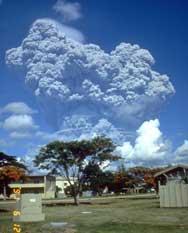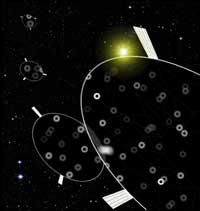How to cool a planet

The solution of scientists comes from the path of geoengineering, that is, they propose the use of technology to influence the state of the planet. In order to cool the soil, among others, it has been proposed to fertilize the marine plankton, simulate a volcanic eruption, sequester the carbon and establish a umbrella in space.
Marine plankton, for example, ingests large amounts of CO2 during photosynthesis. Therefore, they have thought of fertilizing the sea with iron particles to remove CO2 from the atmosphere. However, testing has not clearly demonstrated whether CO2 has been left on the seabed or returned to the atmosphere.
The installation of a giant umbrella in space would shade the Earth without contaminating it. The idea of researchers is to send millions of silicon disks into space. They would be released in packages and, once the discs were opened, they would form a large umbrella structure. That would have excessive costs.

Space umbrella proposed by scientist Roger Angel. It would be complemented by millions of silicon discs that would reduce by 2% the sunlight going to Earth. (Illustration: Roger Angel, UA Steward Observatory
Another technique underway is carbon sequestration. In fact, the Norwegian oil company Statoil has sunk 10 million tons of CO2 into the sea for 12 years. But, also in this case, nobody knows how long the gases will remain at the bottom of the sea.
The researchers' favorite proposal is volcanic eruption. History has left evidence: In 1991, in the Philippines, the Pinatubo volcano exploded, which filled 20 million tons of sulfur dioxide in the stratosphere. This prevented the detachment of the Sun's energy, thereby lowering the Earth's average temperature. But scientists will not fly a volcano. His idea is to send millions of tons of sulfur dioxide to the stratosphere through balloons. This would reflect 1% more solar energy to space than today. According to the researchers, this technique is the most useful so that in 2050 the temperature of the planet returns to the pre-industrial level, but also the most dangerous. In fact, if sulfur dioxide is not supplied continuously, it could cause accelerated warming.
Greenhouse effect

Greenhouse gases emitted since industrialization have caused Earth warming. (Photo: Reuters and Ilyia Naymushin.
Many times it has been said that the greenhouse effect is the most serious disease on the planet. But if it were not for him, the average temperature of the world would be -19 ° C. It is a natural mechanism in which a beam of atmospheric gases allows the passage of the heat of the Sun and keeps it inside. But since industrialization, greenhouse gases have increased a lot, especially CO2. According to UN data, by 2100 the temperature will increase between 1.4°C and 5.8°C, but the winters will be very cold and hard.
But geoengineering techniques are not enough to avoid this. Professor Tim Lenton of the University of East Anglia said that “only geoggenisation cannot solve the problem, but some of the proposed mechanisms may be complementary to reducing greenhouse gas emissions.”
Published in 7K.
Buletina
Bidali zure helbide elektronikoa eta jaso asteroko buletina zure sarrera-ontzian











